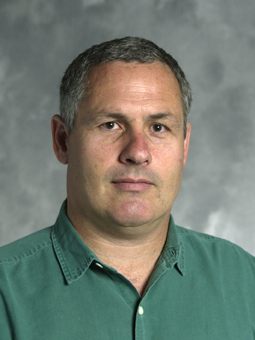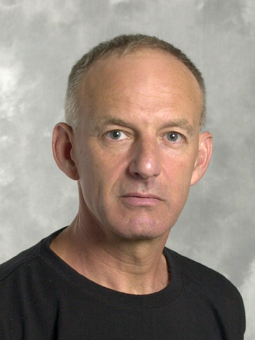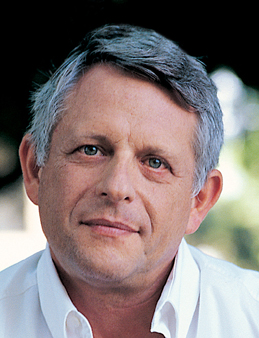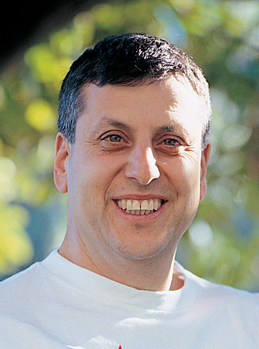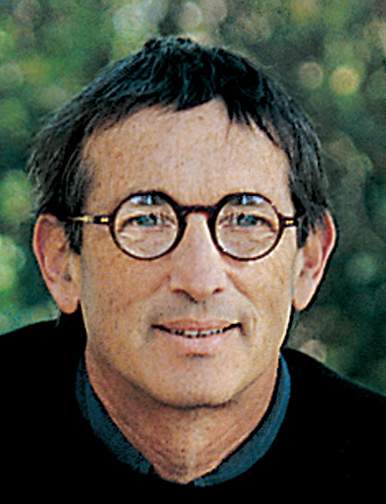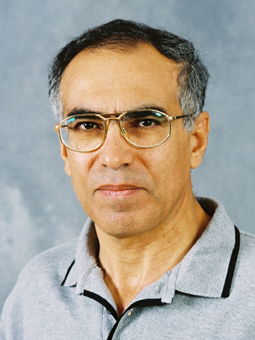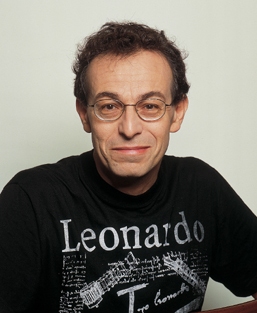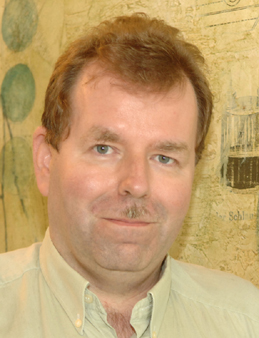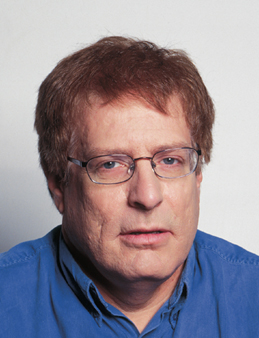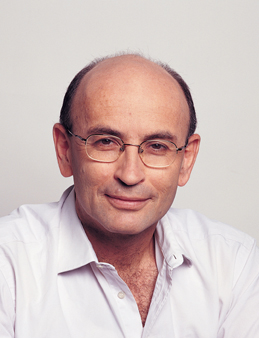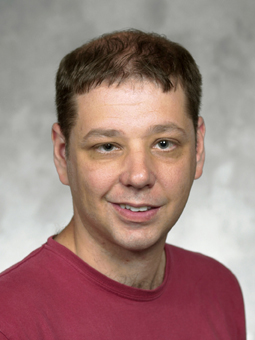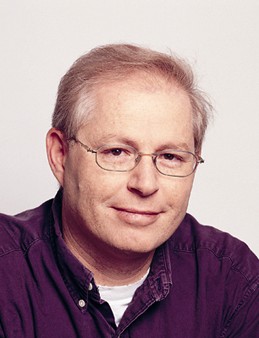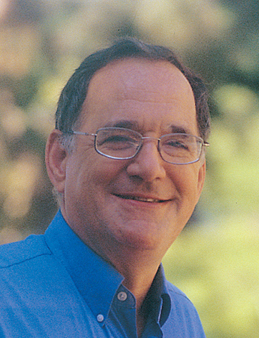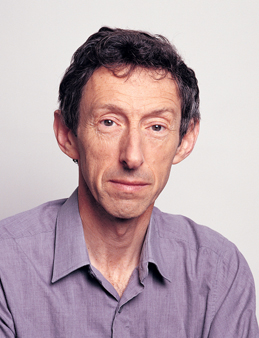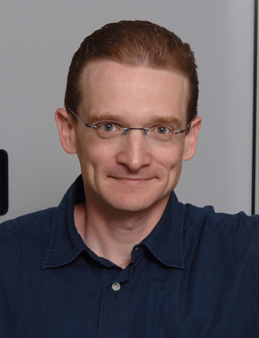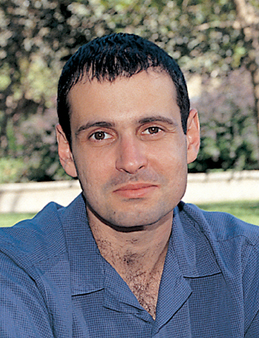Better Biodiesel
Tiny algae – simple, single-celled life forms that can be found in oceans, lakes and even on land when there’s enough moisture to sustain them – might hold one of the solutions to the fuel crisis. Diverting arable land to such crops as corn and sugar cane for ethanol production is problematic, not only because of rising global food prices, but because the ecological impact is unclear, at best. Algae, on the other hand, can be grown with marginal resources where they won’t compete with food plants. Algae also grow faster than plants and produce higher biomass in a shorter time. Best of all, some kinds of algae produce biomass that contains as much as half their weight in oil – oil that can easily be converted to biodiesel.
Profs. Avihai Danon of the Plant Sciences Department and Uri Pick of the Biological Chemistry Department are, with support from AERI, investigating several different strains of algae. They have begun with the basics, unraveling the ways in which these plant-like microorganisms use sunlight and CO2 to grow and to store energy. In particular, they are studying how the different algae maintain the tradeoff between growth and oil production. Once they have identified the genes involved in regulating the algal metabolism, says Danon, they’ll have the tools to develop ways to control the processes themselves. Eventually, they hope to create ”superalgae” that could be grown in a controlled and environmentally suitable fashion to yield an estimated 30 times the oil output of the best plant crops. Such algae, which would be harvested year-round and produce little waste, could be farmed near power plants, where they would convert excess CO2 to oil, making them a truly green alternative.
Prof. Avihai Danon’s research is supported by Mr. and Mrs. Yossie Hollander, Israel. Prof. Danon is the incumbent of the Henry and Bertha Benson Professorial Chair.
Prof. Uri Pick’s research is supported by Mr. and Mrs. Yossie Hollander, Israel. Prof. Pick is the incumbent of the Charles and Louise Gartner Professorial Chair.
Quick Breakdown
Creating environmentally friendly fuel from trash might be the ultimate recycling feat. When Prof. Ed Bayer of the Biological Chemistry Department began working on bacterial protein complexes that break down cellulose – the long, tough sugar-based molecules found in wood, plants and paper – his initial aim was to find ways to reduce the mountains of paper sitting in landfills. But the significance of this research for biofuel production has become evident in the last few years: The short-chained sugars churned out by these protein complexes are ideal for ethanol production.
In the 1980s, Bayer discovered how the cellulosome – the name he and his team gave to the bacterial machinery for digesting cellulose – operates. This living mechanism is actually a group of enzymes that work together chopping up the repeating sugar units of the cellulose’s long, insoluble chains. The result is simple sugar molecules (notably glucose) that the bacteria can then feast on.
But bacteria are frustratingly slow in breaking down cellulose – especially the cellulose in paper. Bayer has been devising improved cellulosomes that will hopefully turn paper and other waste cellulose into short sugar chains in a matter of days or even hours, rather than months or years. Recently, with support from AERI, he teamed up with Profs. Gideon Schreiber and Dan Tawfik of the Biological Chemistry Department, combining their different approaches: Schreiber’s research focuses on protein-protein interactions, altering the design of proteins to adjust their activity, while Tawfik uses the principles of natural selection to ”evolve” proteins that are better adapted to specific tasks. So far, their designer cellulosomes can turn a lab dish full of finely shredded paper into simple sugar syrup in about a day.
Prof. Ed Bayer’s research is supported by Mr. and Mrs. Yossie Hollander, Israel. Prof. Bayer is the incumbent of the Maynard I. and Elaine Wishner Chair of Bio-Organic Chemistry.
Prof. Gideon Schreiber’s research is supported by the Clore Center for Biological Physics; the Helen and Milton A. Kimmelman Center for Biomolecular Structure and Assembly; and Mr. and Mrs. Yossie Hollander, Israel.
Prof. Dan Tawfik’s research is supported by the J & R Center for Scientific Research; the Jack Wolgin Prize for Scientific Excellence; Mr. and Mrs. Yossie Hollander, Israel; Mr. Rowland Schaefer, New York, NY; and the estate of Fannie Sherr, New York, NY.
Controlled Reaction
Nuclear fusion may be the holy grail of clean, abundant energy. When atoms such as hydrogen collide at high speeds and fuse to form helium, tremendous amounts of energy are released. So far, this form of energy, which powers our sun and all the stars, has been used by man only for destructive purposes (the Hydrogen bomb), but if it could be controlled and turned to peaceful uses, the world might have abundant electricity without carbon and other chemical pollution, and with minimal radioactive waste. There’s just a catch or two: The energy requirements for creating the super-hot plasma needed to generate nuclear fusion are greater than the energy produced – at least under the conditions available today. In addition, fusion is difficult to sustain in a safe, controlled manner here on Earth.
Prof. Yizhak Maron and Dr. Eyal Kroupp of the Institute’s Particle Physics Department are part of the global scientific community investigating hot and dense plasmas in an effort to progress towards the efficient production of these hot plasmas. The fundamental understanding thus gained can be used in larger systems to reach the conditions for viable fusion-based energy production. They are investigating a promising method for producing plasma, called z-pinch, in which a plasma is compressed in a cylindrical tube using magnetic pulses. This compression forms a hot, dense plasma of various ions in the center of the tube. Such plasma also emits intense pulses of radiation, such as that which will eventually be required for achieving fusion conditions.
At present, the scientists are, with support from AERI, experimenting with the design of the setup. For instance, they are working on a gas injection method that will give them greater control over the initial density of the hydrogen gas and will hopefully improve the efficiency of the process. They are also exploring ways to ensure plasma stability in specific types of systems – important for achieving the proper conditions for controlled fusion.
The diagnostics developed in the Weizmann Plasma Laboratory and the insights gained are utilized in the world’s largest systems, particularly in the U.S., for diagnosing high-energy-density plasmas. The Plasma Laboratory at the Weizmann Institute is one of the participants in the prestigious University Excellence Center established by the U.S. Department of Energy, along with Cornell University, the University of Rochester and Imperial College London.
Prof. Yitzhak Maron’s research is supported by the Monroe and Marjorie Burk Fund for Alternative Energy Studies; Sandia National Laboratories; and Mr. and Mrs. Yossie Hollander, Israel. Prof. Maron is the incumbent of the Stephen and Mary Meadow Professorial Chair of Laser Photochemistry.
Conference for Top Students
A critical issue for meeting the energy challenge is: Who will do the relevant basic research? This question is critical because decades of neglect and lack of interest and resources have severely shrunk the pool of scientists with the training to enable them to tackle fundamental research issues. In an attempt to break the pattern in which few students are attracted to the field because of a dearth of funding and of top researchers, Weizmann researcher David Cahen initiated the idea of a conference – one he termed an ”experiment.”
Cahen, together with colleagues from two other Israeli universities who share his concern, convinced the Batsheva de Rothschild Foundation to provide the bulk of the funding, which was supplemented by support from the Safed Foundation, the Institute’s AERI, Bar Ilan University and the Technion. They then selected 24 of the nation’s top students in the physical, life and engineering sciences who were in their final year of Ph.D. studies and invited them to spend five days with 20 Israeli and foreign senior experts in various aspects of alternative energy research – from the very basic to the very practical. (Weizmann Board of Governors member, Yehuda Bronicki, an industrialist, was one of the experts.) The conference, called ”Alternative, Sustainable Energy Options,” took place in a small hotel on an isolated Galilee hillside. Several of the students, most of whom were interested in the subject but had little or no alternative energy experience, admitted they thought the conference would be a ”pleasant week in a nice location.”
What they found was an intensive week of presentations by experts in everything from fundamentals to engineering, followed by small-group sessions on systematic, innovative thinking approaches that led to dynamic discussions and brainstorming, along with focused tutoring sessions in the senior scientists’ areas of expertise. The students themselves proposed the topics and led the discussions for the closing sessions of the conference.
Said one student: ”The seminar allowed us to form our own opinions about directions for fruitful avenues of research for possible new approaches to alternative energy.” The three conference organizers were optimistic: ”How large a new cadre of energy researchers will develop as a result of the meeting remains to be seen, but it seems very possible that its first seeds were planted on a beautiful, peaceful Galilee mountainside.”
Prof. David Cahen’s research is supported by the Nancy and Stephen Grand Research Center for Sensors and Security; Mr. Yehuda Bronicki, Israel; and Mr. and Mrs. Yossie Hollander, Israel. Prof. Cahen is the incumbent of the Rowland and Sylvia Schaefer Professorial Chair in Energy Research.
Don't Bury It, Recycle It!
Short-term solutions to CO2 emissions, a main culprit in global warming, include such schemes as burying CO2 from smokestacks deep in the ground (especially in partially empty oil wells) or in the ocean. But many suspect that these fixes, which are largely untried, might be an unwelcome legacy for future generations; in addition, storage space is ultimately limited. Our fossil fuel supplies, which have taken nature millions of years to produce, could run low in a matter of decades. Meanwhile, global CO2 emissions continue to rise, and the Earth’s ability to absorb the excess, through green plants and large bodies of water, lags further and further behind. Weizmann Institute chemists, with support from AERI, are looking for creative ways to turn the one-way street – underground oil extraction at one end and a waste disposal problem at the other – into a sustainable and renewable cycle. They are investigating the possibility of converting captured CO2 back into fuel that could then be used to power cars, ships or planes.
To do this, the scientists must surmount several fairly formidable obstacles: When fuel burns, the resulting chemical reaction releases energy; any method for reversing that process must restore the lost energy – and then some. The trick to creating a carbon-neutral cycle (one that takes as much carbon out of the atmosphere as it adds) is to not only add energy into the process but to employ renewable, non-polluting energy (such as sunlight) for that purpose. Ideally, the end product of this chemical reaction should be only the fuel and such substances as oxygen or water that won’t harm the environment.
Presently the scientists are following several avenues of inquiry into designing new catalysts – the materials facilitating chemical reactions – that will help turn CO2 into such fuels as methanol, using the sun’s energy. The scientists are starting from scratch on this project: Few have attempted to recreate hydrocarbon fuels from CO2 in any kind of continuous, sustainable manner, and none have succeeded. In fact, says Prof. Ronny Neumann, Head of the Institute’s Organic Chemistry Department, the team’s first step has been to review the scant literature on the subject and figure out where others went astray.
Although their task may seem daunting, the Institute team, all members of the Organic Chemistry Department, should be up to the challenge: Between them, Profs. Neumann and David Milstein have many years of experience in creating catalysts for a variety of industrial and scientific chemical reactions. Many of their catalysts have been designed with the aim of making these reactions safer for the environment – by working more efficiently and producing fewer polluting waste products. In fact, Milstein’s research was recently mentioned in Science magazine’s ”breakthroughs of the year” for its contribution to the field of green chemistry. Prof. Gershom (Jan) Martin’s research focuses on catalysis from another angle: He develops computer simulations that reveal various potential catalyst molecules in atomic detail, a sort of ”drawing board” that allows the scientists to design and test different molecules on-screen in conjunction with lab experiments.
The scientists plan to explore several means of producing carbon-based fuel. Hydrocarbon molecules such as methanol are made of carbon atoms chemically bound to hydrogen. The chemical process to create the hydrocarbons must remove the oxygen from the CO2 molecule and force the remaining carbon atoms to bond with hydrogen. This is a multistep procedure, and the scientists are researching various routes to the end product, which should be only hydrocarbon fuel and oxygen. The team also intends, in the future, to investigate the possibility of using CO2 to produce hydrogen for fuel cells. In this case, only one oxygen atom will be split off from the CO2 molecules, creating CO. In a separate reaction, the CO will undergo a chemical reaction with water (H2O), producing hydrogen.
So far the scientists have seen some signs indicating they’re on a promising path, but Neumann cautions that the journey before them is likely to be quite a long one. Creating the technology to generate new fuels from the waste products of the old ones may require years of hard work and basic research. The research just beginning in the Weizmann Institute labs is a true investment in the future.
Prof. Gershom Martin’s research is supported by the Helen and Martin Kimmel Center for Molecular Design; and the Wolgin Prize for Scientific Excellence. Prof. Martin is the incumbent of the Margaret Thatcher Chair of Chemistry.
Prof. David Milstein’s research is supported by the Helen and Martin Kimmel Center for Molecular Design. Prof. Milstein is the incumbent of the Israel Matz Professorial Chair of Organic Chemistry.
Prof. Ronny Neumann’s research is supported by the Helen and Martin Kimmel Center for Molecular Design; Mr. Peter Cohn, New York, NY; and Mr. and Mrs. Yossie Hollander, Israel. Prof. Neumann is the incumbent of the Rebecca and Israel Sieff Professorial Chair of Organic Chemistry.
Green Engineering
To a farmer, plants are food and a source of income. To a biologist, they are living organisms with organs, cells, genes and life cycles. To an ecologist, they are integral components of an ecosystem. Dr. Dror Noy and Prof. Avigdor Scherz of the Plant Sciences Department look at plants from all of these perspectives, plus one more – that of engineers.
Plants contain the ultimate machinery for absorbing sunlight and a few simple molecules, and turning them into the complex sugars and proteins that sustain not only their own existence but that of most of the food chain. We humans also use plant energy to cook food, heat homes and fuel vehicles – through direct burning or conversion to another form such as ethanol. While ethanol production increases the value of the farmer’s crops in the short run, ecologists warn that there are not enough resources to both feed the world and meet the rising demand for biofuel, using conventional agriculture. Moreover, biologists point out that climate change might affect the ability of many plants’ photosynthetic energy conversion machinery to function efficiently.
To engineers, these are problems that require some creative thinking, research and, possibly, unconventional approaches. While photosynthesis evolved to fuel the growth and reproduction of plants, scientists – among them Noy and Scherz – hope to find ways to revamp its machinery to produce green fuels for transportation.
Noy and Scherz are working, with support from AERI, with one-celled marine organisms – cyanobacteria and algae – that, like plants, are photosynthetic. The advantage of these microorganisms is that they grow easily in ponds and pools, requiring no soil and little maintenance. Scherz and his group have been revealing the secrets of enzymes that allow these organisms to function efficiently in extreme temperatures. They aim to apply this knowledge to creating genetically engineered strains of cyanobacteria and algae that will thrive in a range of climactic conditions and efficiently produce quantities of biomass for fuel.
Noy, meanwhile, is working on upgrading the working core of the photosynthetic apparatus. The idea is that the beginning stages of photosynthesis, in which light particles are captured and their energy is converted to chemical energy, could be engineered to split water molecules into hydrogen and oxygen. He is creating new proteins that can be integrated into the existing machinery for various purposes, including some that may in the future turn the microorganisms into tiny factories that run on sunlight and produce a steady supply of hydrogen.
Dr. Dror Noy’s research is supported by the Chais Family Fellows Program for New Scientists; the Koret Foundation; Mr. Ilan Gluzman, Secaucus, NJ; and Dr. and Mrs. Robert Zaitlin, Los Angeles, CA.
Prof. Avigdor Scherz’s research is supported by Mrs. Sharon Zuckerman, Toronto, Canada. Prof. Scherz is the incumbent of the Yadelle and Robert N. Sklare Professorial Chair in Biochemistry.
Winning Nanocombinations
Solar cells work because sunlight that hits certain material structures imparts energy to the material’s electrons, making it possible to separate electrons from their positive atom cores. This separation is the critical step in converting solar energy to electrical energy. While charge separation devices – photovoltaic cells – are already in use today, their high cost and relatively low efficiency makes the electrical power they generate considerably more expensive than conventional electricity from large power plants.
Rather than trying to improve the efficiency of existing solar cells, Weizmann Institute scientists, with support from AERI, decided to take a new approach to charge separation. Their idea is to use their combined expertise in organic chemistry, materials research, nanoscience, nanotechnology, and environmental and theoretical chemistry to create new material structures. They are building nanostructures that link together two very different types of nanoparticle – metals and semiconductors – using organic molecules to connect the two. The researchers are also investigating the possibility of creating structures that are self-assembling.
The scientists – Prof. Yinon Rudich of the Environmental Sciences and Energy Research Department, Dr. Boris Rybtchinski of the Organic Chemistry Department, Prof. Ron Naaman of the Chemical Physics Department, and Prof. Gary Hodes and Dr. Leeor Kronik of the Materials and Interfaces Department – are at the ”building-block” stage, working out the basic designs that will yield the best charge separation. Several promising arrays have already been identified. The end results, they hope, will create a breakthrough in solar energy conversion that will go beyond improving conventional solar cells. Efficient solar nanostructures might be used, for instance, to split water for hydrogen production. They could also be incorporated into a variety of surfaces, or even be applied in the form of light-harvesting paint. In the future, ”solar” nanostructures on the exterior of buildings could also be adapted for various purposes – such as using sunlight to destroy pollutants in the air.
Prof. Gary Hodes’s research is supported by the Helen and Martin Kimmel Center for Nanoscale Science.
Dr. Leeor Kronik’s research is supported by the Gerhardt Schmidt Minerva Center on Supramolecular Architectures; and the Carolito Stiftung, Switzerland. Dr. Kronik is the incumbent of the Delta Career Development Chair.
Prof. Ron Naaman’s research is supported by the Nancy and Stephen Grand Research Center for Sensors and Security; the Fritz Haber Center for Physical Chemistry; the Wolfson Advanced Research Center for Bio Micro Technology; the Philip M. Klutznick Fund for Research; the Carolito Stiftung, Switzerland; Intel, Israel; and Mr. Roberto Kaminitz, Sao Paulo, Brazil. Prof. Naaman is the incumbent of the Aryeh and Mintze Katzman Professorial Chair.
Prof. Yinon Rudich’s research is supported by the Helen and Martin Kimmel Center for Nanoscale Science; the Sussman Family Center for the Study of Environmental Sciences; the Carolito Stiftung, Switzerland; Mr. and Mrs. Yossie Hollander, Israel; and Intel, Israel.
Dr. Boris Rybtchinski’s research is supported by the Sir Charles Clore Research Prize; the Robert Rees Applied Research Fund; Mr. and Mrs. Yossie Hollander, Israel; and Mr. and Mrs. Larry Taylor, Los Angeles, CA. Dr. Rybtchinski is the incumbent of the Abraham and Jennie Fialkow Career Development Chair.
Superior Solar Cells
A number of Weizmann scientists are working to break new ground for novel types of solar cells, hoping to make them more cost-effective, either through improved efficiency or by making them simpler and cheaper. ”At present, it seems unlikely that we will end up with one solution; rather with a number of different types of solar cells for different purposes,” says Prof. Gary Hodes of the Materials and Interfaces Department. Hodes’s research, part of which is done in collaboration with colleagues at the Institute, runs in two related directions: researching new methods for manufacturing cheap solar panels by depositing solutions of light-collecting material on a surface; and creating new photovoltaic materials.
Profs. Igor Lubomirsky and David Cahen of the same department and Drs. Akiba Segal and Ayelet Vilan of Chemical Research Support are attacking the cost-efficiency problem from another angle. Sunlight comes in a wide range of colors, but solar cell materials work most efficiently with a limited variety of colors. Very expensive solar cells can minimize loss by letting the light pass through several layers, each attuned to a different color. The Weizmann scientists took an old, but at the time expensive idea: with a special mirror, they split sunlight into two different color ranges – and deflected each to a separate solar cell attuned to that color range. Their innovation was that they discovered how to use very cheap mirrors effectively. Their experiments have already shown that an ultra-cheap mirror can significantly increase the total efficiency of the solar collection system – well above that of the best cell presently available.
Cahen and his group are also putting their expertise in molecular electronics to use exploring potential new types of solar cells. Their work and Hodes’s represent a few first steps toward one holy grail of solar energy research: solar paint.
Prof. David Cahen’s research is supported by the Nancy and Stephen Grand Research Center for Sensors and Security; Mr. Yehuda Bronicki, Israel; and Mr. and Mrs. Yossie Hollander, Israel. Prof. Cahen is the incumbent of the Rowland and Sylvia Schaefer Professorial Chair in Energy Research.
Prof. Gary Hodes’s research is supported by the Helen and Martin Kimmel Center for Nanoscale Science.
Prof. Igor Lubomirsky’s research is supported by Mr. and Mrs. Yossie Hollander, Israel
Shipping Solar Power
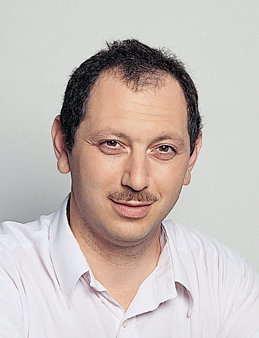
Solar energy and wind power have a number of drawbacks that have prevented them from being used on large scales. Not the least of these is the fact that present technologies convert them to electricity or heat on the spot, while the best locations for exploiting these types of energy tend to be places where few people live: deserts, windy hilltops or the middle of the ocean. But what if this cheap, non-polluting, renewable energy could be stored and transported?
One way to do this would be to use wind-generated or sun-generated electricity to power the chemical production of fuel – a movable form of stored energy. Prof. Igor Lubomirsky of the Materials and Interfaces Department has come up with an idea for doing just that. The chemical reaction he is interested in would split molecules of carbon dioxide (CO2) to create carbon monoxide (CO) and oxygen (O2). The carbon monoxide (which is dangerous mainly when inhaled in small, enclosed spaces) could then be easily transported to where it is needed or, alternatively, converted by another simple chemical reaction into fuel – for vehicles or power stations.
Splitting CO2 molecules directly is very inefficient. Lubomirsky focuses, with support from AERI, on the possibility of creating an alternative process in which CO2 is first converted into a cheap, reusable intermediate product such as soda (a common, naturally occurring mineral compound) and then split into oxygen and CO by electrical current. His goal is to develop a chemical process that is stable over time, as well as being non-polluting and requiring minimal maintenance. Because the gasses CO2 and CO are easy to transport, plants for producing the CO could be located in sparsely populated deserts or, as Lubomirsky envisions, anchored in oceans, where steady, year-round winds could provide a constant energy source. Instead of oil tankers crossing the ocean, the future could see ships carrying compressed CO2 plying routes to floating wind-power plants while CO, ready to be turned into fuel, is delivered to the nearest gas station.
Prof. Igor Lubomirsky’s research is supported by Mr. and Mrs. Yossie Hollander, Israel.
Solar Energy for the Masses
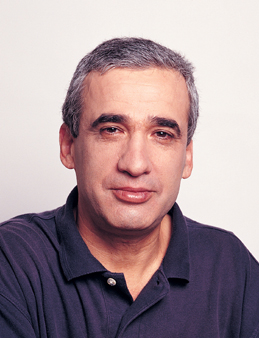
The Weizmann Institute has long been a leader in developing innovative solar energy science and technology. Since the 1980s, the Solar Tower research complex, presently headed by Prof. Jacob Karni, has enabled solar research to move from the lab to pilot scales.
The tower complex consists of 64 large mirrors – the heliostat field – arrayed at the base of the tower. These mirrors move in carefully calculated arcs to catch the sun’s rays and direct them to one of several experimental stations on the tower, or to another mirror high up on the building that directs the concentrated beam of light downward to equipment at ground level.
Temperatures after concentration can reach up to 1,000°C – higher if secondary concentration devices are used. A solardriven gas turbine developed in the Solar Tower has a higher efficiency than that of current steam turbines. Other innovations include the ”porcupine” – a unique solar receiver built of radiation-absorbing ceramic pins arrayed behind a quartz window. This invention, properly named the Directly Irradiated Annular Pressurized Receiver, or DIAPR, is designed to absorb the maximum amount of sunlight while withstanding the high temperatures and pressures of compressed air, which has been heated to the temperatures used for driving turbines. One idea for the commercialization of the solardriven gas turbine is to create hybrid power stations that on cloudy days can run on conventional fuels.
In addition to producing electricity, Institute scientists are working on various methods for producing fuel, especially hydrogen. Some of the more promising areas of investigation involve using solar energy to drive chemical reactions.
Metals such as zinc or boron, which exist naturally in oxides – chemical compounds in which the atoms are bound to oxygen – can be converted thermally to a pure form in solar plants. The pure metal can then be carried in a fuel cell, where, mixed in controlled amounts with water, a chemical reaction will release hydrogen, leaving behind metal oxide to be recycled in the solar plant.
In addition, research is in progress on methods for using solar energy to convert a number of different materials into environmentally friendly fuels. These include producing syngas or hydrogen from methane by various methods. Another project involves the solar processing of biomass such as organic waste using a unique process for the gasification of wet biomass to produce hydrogen-rich gases for fuel.
Prof. Karni's research is supported by the Sussman Family Center for the Study of Environmental Sciences; the Angel Faivovich Foundation for Ecological Studies; Mr. Ilan Gluzman, Secaucus, NJ; Mr. Jack Halpern, New York, NY; and Mr. S. Donald Sussman, New York, NY.
